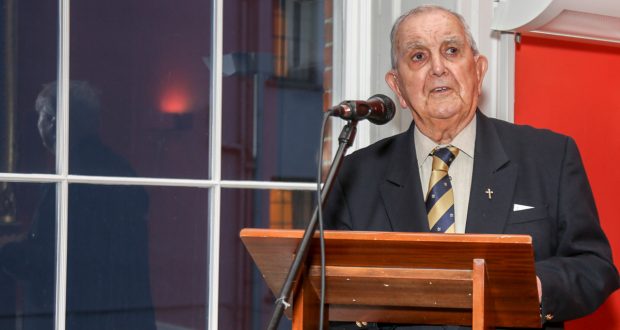The Life and Times of Daniel Murray: Archbishop of Dublin 1823 – 1852
by Thomas J. Morrissey SJ (Messenger Publications, €27.00)
Tom Morrissey’s latest book is one which everyone interested in Irish Church history has long looked for. It was as a pastoral bishop that the great Daniel Murray excelled. It is no exaggeration to claim that he was the architect of the flowering of Irish Catholicism at home and abroad in the 19th and 20th Centuries.
Murray was born on 18 April 1768 near Arklow. His father was a prosperous tenant of Lord Wicklow. Murray was educated locally and later enrolled in the classical school of Dr Thomas Betagh in Dublin. From 1784 to 1790 he attended the Irish College in Salamanca. Ordained for Dublin diocese in 1790 after further studies he returned to Ireland two years later.
Murray’s first appointment was as a curate in St Paul’s parish, Arran Quay. From 1795 onwards he served as an assistant to Fr William Ryan, PP, Arklow, who was murdered during the 1798 Rising. Murray himself narrowly escaped death at the hands of the Antrim Militia on their way back from their victory at Vinegar Hill. Regarded with suspicion by the authorities, he swore before the rector in Arklow that he had not taken the United Irishman oath.
Back in Dublin Murray served as a curate in St Andrew’s (then at Townsend Street, now at Westland Row) and later in St Mary’s (then at Liffey Street, now at Marlborough Street). He became a member of the metropolitan chapter and was appointed PP of Clontarf in 1805. He served as president of St Patrick’s College, Maynooth, from 1812 to 1813.
Consecrated coadjutor to Archbishop John Thomas Troy in 1809, he gradually took over the running of the archdiocese and succeeded as archbishop when Troy died in 1823. Influenced by the widespread atrocities and terror spawned by the French Revolution and his own experiences of the 1798 Rising, Murray had a life-long aversion to violence, popular movements and politics.
By virtue of his natural instincts he also had a profound respect for legally established authority. Thus he tended to co-operate with the government.
This he did with considerable success. By assisting with the development of the National Schools, he was enabled to establish a comprehensive primary education system in his archdiocese.
However, when the well-being of the Catholic community was involved, he did not hesitate to take positions not to the government’s liking. He was totally opposed to the government’s veto on Irish episcopal appointments and he was an ardent champion of the movement for Catholic Emancipation.
Murray worked closely with his priests, whom he urged to keep clear of political activity. He successfully re-organised the Dublin ecclesiastical province. Because of the high regard in which he was held, he had a key role in the distribution of the flood of famine relief coming into the country in the mid-1840s.
He had a deep concern for adequate health and education provision. In 1812 he persuaded Edmund Rice to establish the Christian Brothers in Dublin to provide education for poorer boys. He encouraged the Jesuits to cater for the education of the better-off. From 1832 he supported the educational foundations of the Irish Vincentian Fathers. As early as 1812 he had asked Mary Aikenhead to establish the Sisters of Charity to cater for the poor.
Later he encouraged Frances Ball to provide for the education of the better-off Catholic girls. In 1824 he supported Catherine McAuley in founding the Irish Sisters of Mercy. He assisted Fr John Hand to found All Hallows Missionary College in 1838 and helped introduce The Society of St Vincent de Paul into the archdiocese 1844.
Efficacy
Convinced of their efficacy, he promoted religious devotional practices which were popular on the continent. He oversaw the building of 100 churches and 200 schools.
Murray’s determined and individual approach to issues left him at odds with some of his colleagues in the Irish hierarchy, not least Archbishop John McHale on the question of the National Schools.
His positive position on the so-called ‘Godless’ Queen’s Colleges caused a deep rift between him and the rest of his colleagues, including the primate, Archbishop Paul Cullen, who hoped for a Catholic university under their control.
His refusal to support the Repeal movement lost him a large section of popular support, and in his later years he had little understanding or sympathy for the nascent Catholic nationalism then gaining ground.
Murray died on 26 February 1852. Because of his life-long generosity to the poor his estate did not contain enough to pay for his funeral. The Dublin priests and people erected a monument-size statue to him in the Pro-Cathedral. With this fine biography Thomas J. Morrissey provides another well-deserved monument – this time (in the words the Roman poet Horace) a monumentum aere perennius , ‘a monument more lasting than bronze’ – to a truly remarkable prelate.


 Author Thomas J. Morrissey
Author Thomas J. Morrissey 